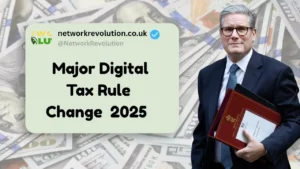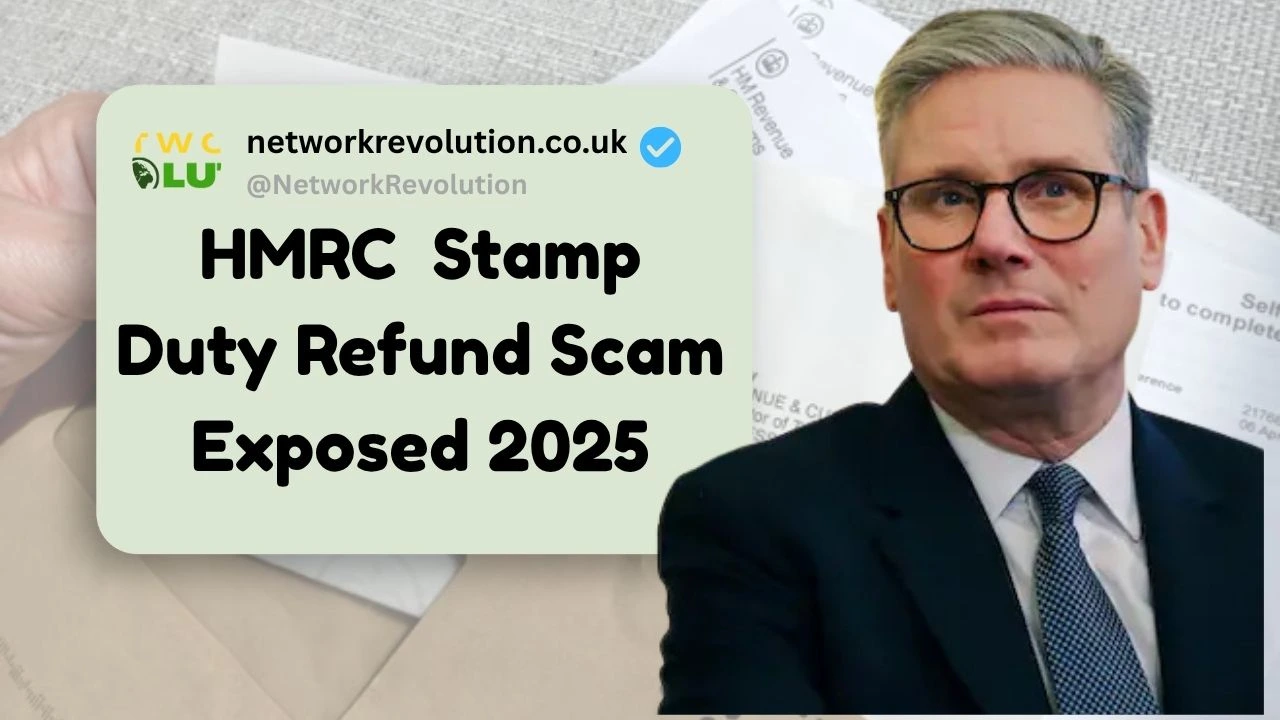Buying a home is one of life’s biggest financial decisions — and now, it’s also one of the latest targets for sophisticated tax scams. HM Revenue & Customs (HMRC) has uncovered a growing wave of fraudulent Stamp Duty Land Tax (SDLT) refund schemes, designed to mislead unsuspecting property buyers.

Under the guise of offering “legal tax savings,” rogue agents are contacting homeowners and investors, promising refunds worth thousands. In reality, these false claims leave victims owing HMRC repayments, penalties, and interest — often costing far more than the supposed savings.
“Stamp duty scams are spreading fast, particularly among buyers of properties that need renovation,” said Anthony Burke, Deputy Director of Compliance Assets at HMRC. “If a claim sounds too good to be true, it almost certainly is.”

Introduction to the Scam
The fraudulent schemes usually involve unsolicited approaches — via email, post, or social media — by self-styled “stamp duty specialists.” These agents promise easy refunds on a “no win, no fee” basis, claiming they can reclassify a home purchase as “non-residential” because it’s temporarily uninhabitable.
HMRC’s investigations reveal that these claims are false. The tax authority confirms that properties still meeting basic residential standards — such as having a kitchen, bathroom, and sleeping areas — are always subject to residential stamp duty, regardless of condition.

Key Features / How the Scam Works
| Step | Action | Outcome |
|---|---|---|
| 1. Unsolicited contact | Buyer receives a letter, email, or ad offering a refund service | Promised “tax savings” |
| 2. Misclassification | Agent files a false SDLT claim marking property as non-residential | HMRC temporarily refunds payment |
| 3. Commission deduction | Agent takes 25–30% commission from refund | Buyer keeps the rest |
| 4. Investigation | HMRC audits the claim and finds it invalid | Buyer faces repayment, penalties, and interest |
| 5. Agent disappears | Fraudulent firm vanishes | Buyer bears full liability |
In many cases, the refund is processed before HMRC’s audit — giving victims a false sense of legitimacy. Once investigations conclude, however, the buyers must repay the full refund plus fines, while the fraudulent intermediaries disappear.
Real-World Example: How Buyers Lose Thousands
| Detail | Example Case |
|---|---|
| Property purchase | £1.1 million (London) |
| SDLT paid | £53,750 |
| False refund claimed | £9,250 |
| Agent’s fee (30%) | £2,775 |
| Refund received by buyer | £6,475 |
| HMRC reclaim demand | £9,250 + penalties + interest |
What began as a “£6,475 refund win” quickly spiraled into a £12,000+ debt, once penalties and interest were applied.

HMRC’s Official Position
HMRC has reiterated that properties needing renovation still qualify as residential dwellings if they retain key living features.
“A property that simply needs rewiring, damp-proofing, or general repairs is still a home,” stated Anthony Burke of HMRC. “Refund claims based on minor disrepair are invalid, and claimants could end up paying more than they tried to recover.”
Also Read Morrisons closing 54 Cafes Across UK in 2025
Morrisons closing 54 Cafes Across UK in 2025
The department advises buyers to treat any refund offer with caution and to verify eligibility directly through official HMRC channels or their conveyancing solicitor.
Legal Backing: Court of Appeal Ruling
The Court of Appeal recently reinforced HMRC’s position in Mudan & Anor v HMRC (2024).
The judgment concluded that a property remains residential even if it’s in poor condition — for example, lacking utilities, needing new wiring, or requiring major refurbishment.
This legal precedent effectively closes the door on claims that use “temporary uninhabitability” as grounds for SDLT reclassification. It also strengthens HMRC’s hand in pursuing fraudulent advisers.
According to tax barrister Sophie Bevan KC,
“The Mudan ruling clarifies that condition-based claims hold no legal ground. Buyers relying on such schemes are not only acting on bad advice but may face financial ruin.”
Expert Reactions and Warnings
Financial experts and mortgage industry leaders have welcomed HMRC’s intervention.
Rohit Kohli, Partner at The Mortgage Shop, said:
“The alert was long overdue. Unscrupulous advisers have been targeting first-time buyers and investors who don’t fully understand stamp duty rules.”
Daniel Hobbs, CEO of New Leaf Distribution, added:
“If it feels too good to be true, it probably is. Genuine tax reliefs never come through cold calls or social media adverts.”
How to Protect Yourself from Stamp Duty Refund Scams
| Protection Tip | Action |
|---|---|
| Verify refund claims | Always confirm eligibility directly through HMRC (GOV.UK) |
| Use licensed professionals | Seek advice only from qualified solicitors or chartered tax advisers |
| Avoid unsolicited offers | Be suspicious of letters or emails promising refunds |
| Never share details | Don’t send tax or bank info to unverified “refund agents” |
| Report suspicious activity | Use HMRC’s official fraud reporting service to alert authorities |
HMRC’s Fraud Investigation Service has increased monitoring of “SDLT repayment agents”, and those submitting false claims could face criminal prosecution.
Why It Matters?
The property market slowdown, coupled with rising costs, has made buyers more receptive to refund offers that promise “easy money.” Unfortunately, this desperation is precisely what scammers exploit.
Beyond financial losses, victims also risk long-term credit issues and potential HMRC scrutiny.
“Even honest homeowners can find themselves in trouble if they sign misleading paperwork,” warned Mark Green, Senior Partner at Harris & Co Tax Advisors. “Once the claim is submitted in your name, you’re legally responsible — not the agent.”
With property transactions averaging hundreds of thousands of pounds, a simple mistake can cost years of savings.
Recent Developments
- HMRC Taskforce Expansion: The government has expanded its SDLT Fraud Taskforce to track down unregulated refund firms.
- Mandatory Licensing Proposal: A proposal is under review to require tax reclaim companies to be FCA-registered by 2026.
- New Guidance Portal: HMRC will launch a Stamp Duty Refund Checker Tool on GOV.UK by early 2026, allowing buyers to verify claim legitimacy before submission.
According to Paul Monaghan, HMRC’s head of enforcement policy:
“We want to empower homebuyers with clear information. Our goal is prevention — not punishment.”
Comparison Table: Genuine Refunds vs Scam Refunds
| Criteria | Genuine SDLT Refund | Fraudulent Scam |
|---|---|---|
| Source | Claimed via official HMRC portal or solicitor | Cold call, email, or online advert |
| Legal Basis | Supported by SDLT exemption laws | Misrepresentation of “uninhabitability” |
| Documentation | Full purchase details and valuation | Vague, incomplete, or falsified forms |
| Fees | Standard legal fees | 25–30% commission “no win, no fee” |
| HMRC Verification | Transparent and traceable | Misclassified or delayed filing |
| Risk Level | Safe | High risk — refund clawback likely |
FAQs
What is the stamp duty scam HMRC is warning about?
It’s a fraudulent scheme where agents file false refund claims by misclassifying residential properties as “non-residential.”
Can I get a refund if my property needs renovation?
No. If your property retains the basic features of a home (like a kitchen or bathroom), it’s still classed as residential.
How can I check if my refund offer is genuine?
Contact HMRC directly through GOV.UK or your solicitor. Never respond to unsolicited refund messages.
Will I be penalised if I unknowingly file a false claim?
Yes. Even if misled, you are legally responsible and may face repayment with interest and penalties.
What should I do if I’ve already engaged an agent?
Stop communication immediately and report it to HMRC’s Fraud Hotline. Keep all correspondence for evidence.

